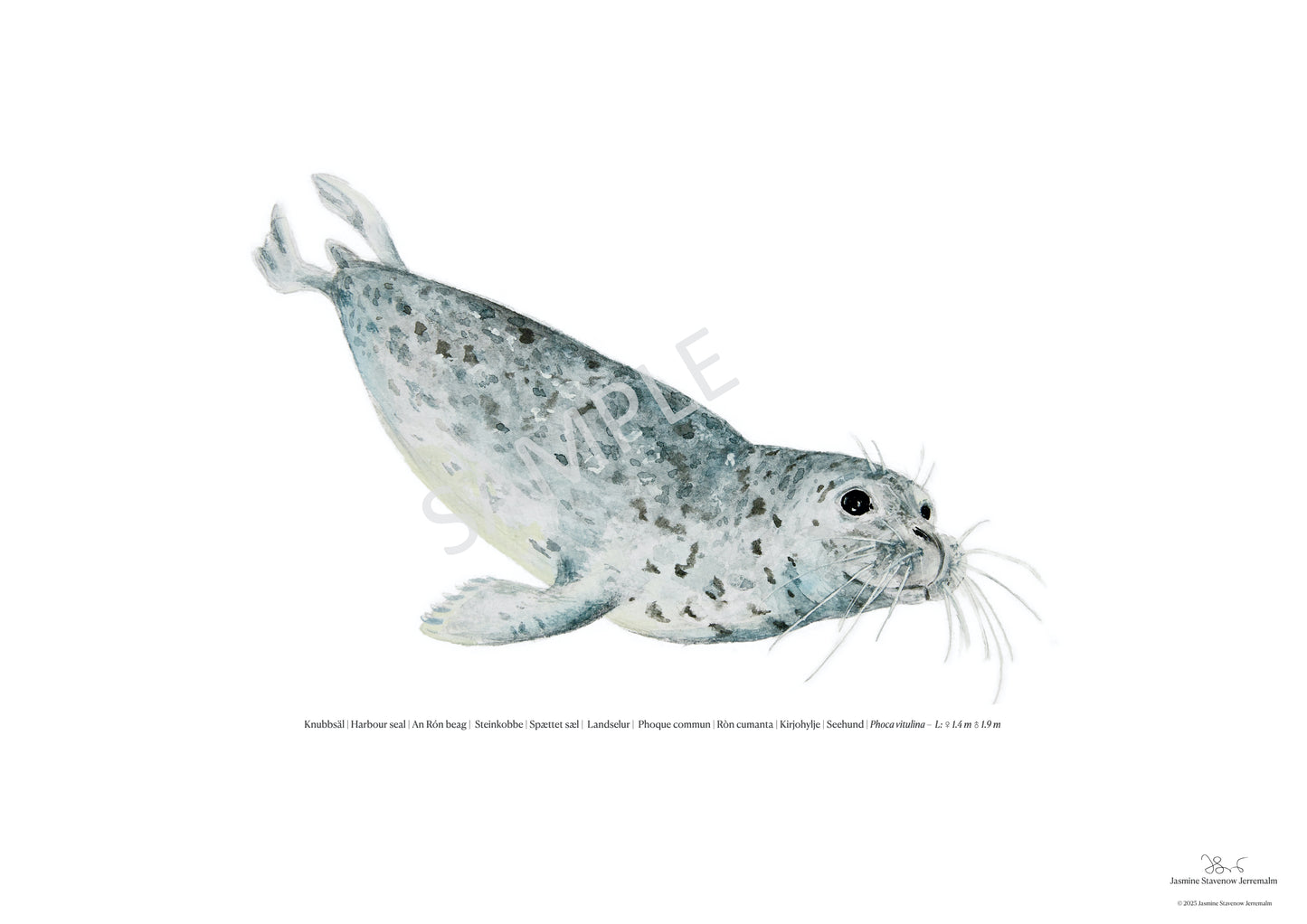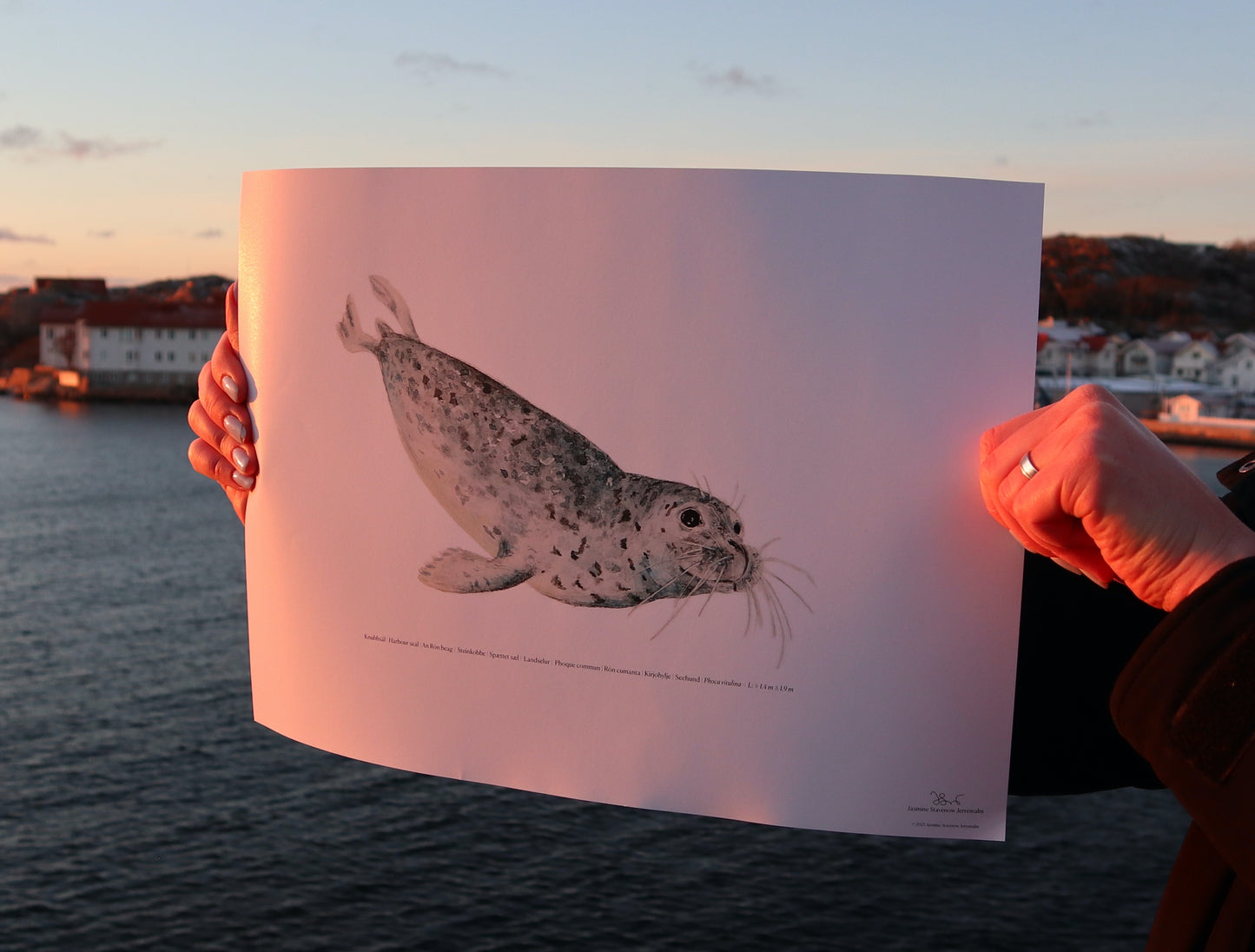Whales et al. ART
Knubbsäl | Harbour seal
Knubbsäl | Harbour seal
Couldn't load pickup availability
Knubbsäl | Harbour seal - Poster print
Water colour illustration - Global species collection
Size: A3 paper
High quality silk paper (200gsm)
Below the water colour illustration, there is a single text line with knowledge about the species. You'll find the common species names in multiple languages, including its latin species name (see below) and also information about the size of the species.
Swedish: Knubbsäl
English: Harbour seal
Gaelige: An Rón beag
Norwegian: Steinkobbe
Danish: Spættet sæl
Icelandic: Landselur
French: Phoque commun
Scots Gaelic: Ròn cumanta
Finnish: Kirjohylje
German: Seehund
Latin species name: Phoca vitulina
About Harbour seals
The Harbour Seal, also known as the common seal, is one of the most widely distributed marine mammals, found along the temperate and Arctic coastlines of the Northern Hemisphere. These seals inhabit a range of coastal environments, including sandy beaches, rocky shores, estuaries, and even ice floes. Renowned for their adaptability, they feed on a diverse diet of fish, crustaceans, and squid, often diving to impressive depths to forage - sometimes deeper than 500m. Harbour seals are highly social but spend much of their time hauled out on land, resting, molting, or caring for their pups, which are born during the spring and summer. Each pup can swim within hours of birth and remains with its mother for several weeks, nursing on rich milk to grow rapidly. While their populations are stable in many regions, harbour seals face threats from habitat disturbance, pollution, entanglement in fishing gear, and disease outbreaks, emphasizing the importance of continued conservation efforts to ensure the survival of this iconic and charismatic species.
The Global Species Collection aims to highlight species that are familiar to many, as they are widely distributed and in many places numerous. In several geographical regions, they have played, and still play, important roles in human cultures, and they have names in many languages. They are some of the most loved and charismatic species, still they hold many secrets left for science to unveil.
Share




